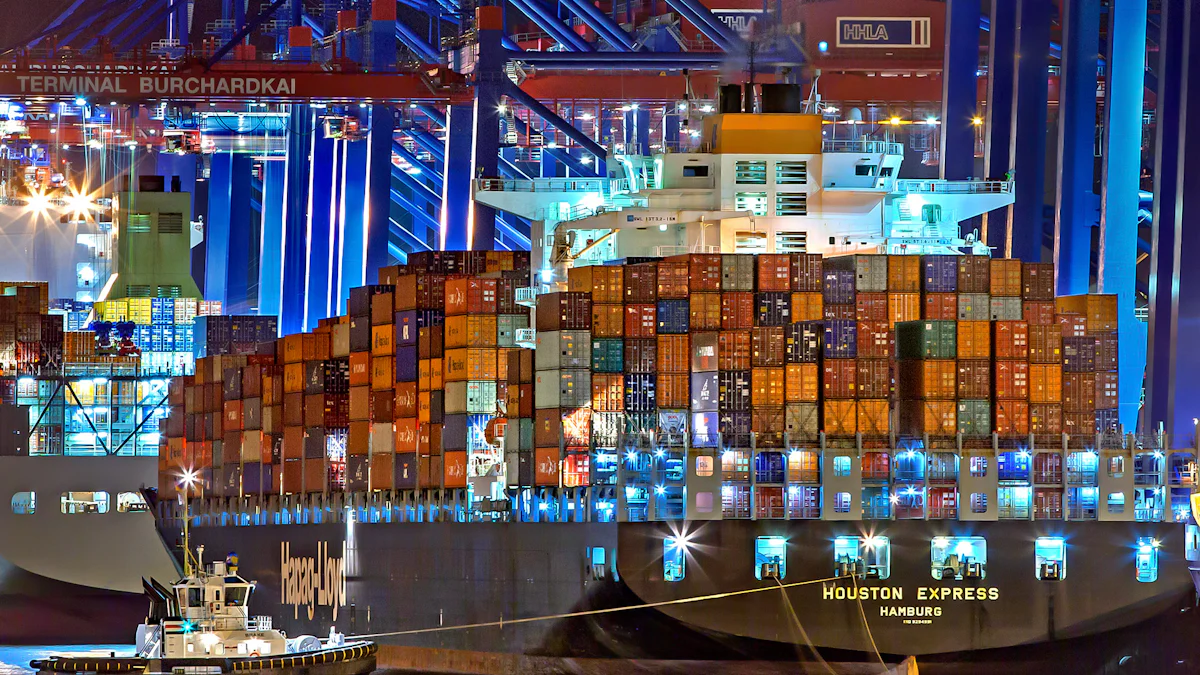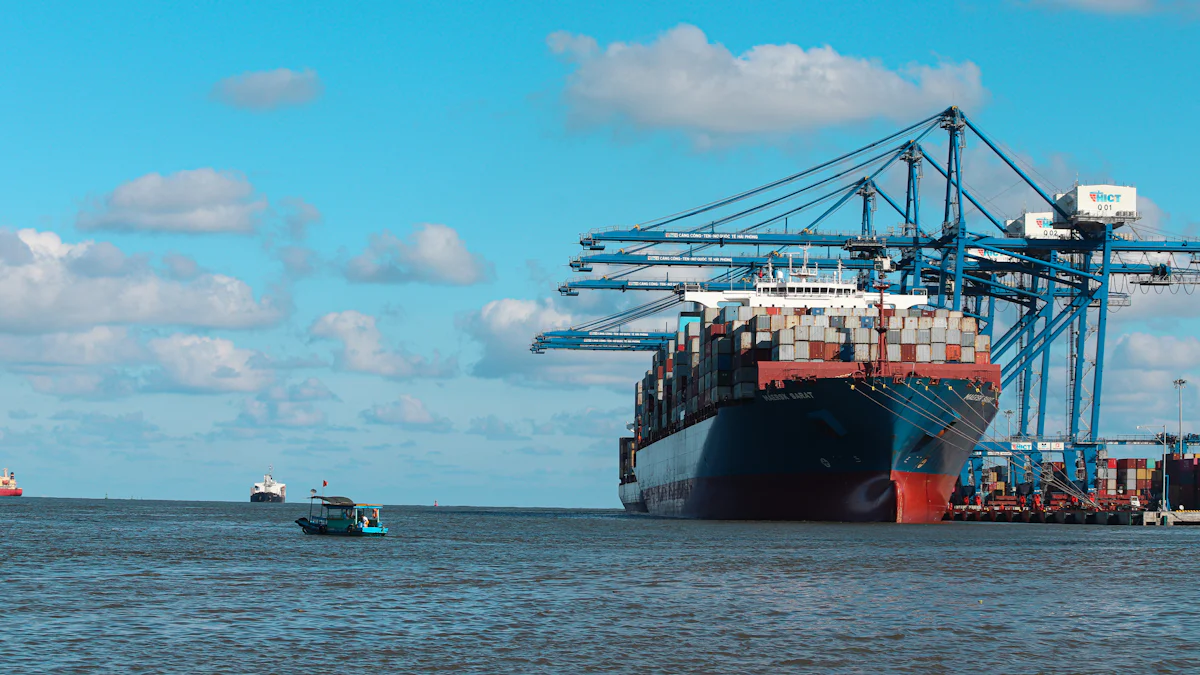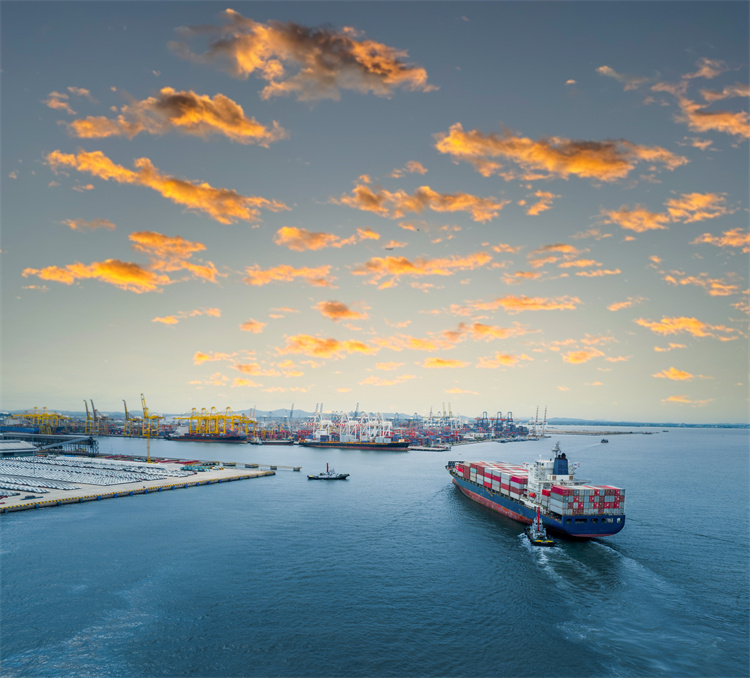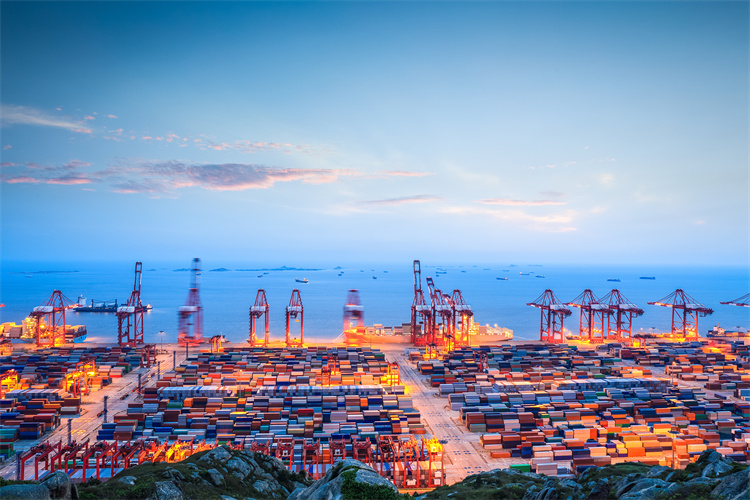August 2024: Navigating the Ocean Freight Market Outlook

The Freight Market, particularly the Ocean Freight sector, is essential to global trade, acting as the backbone for transporting goods across continents. Understanding trends within the Ocean Freight Market is crucial for stakeholders aiming to navigate the complexities of this dynamic industry. The projected growth of the global ocean fleet by 7.8% underscores the market's potential. However, challenges such as the Ocean Freight Market Crisis and low sea freight shipping rates necessitate careful analysis. Stakeholders must stay informed to make strategic decisions in this evolving landscape.
Disruptions in the Red Sea have extended beyond the primary affected routes, causing congestion at alternative routes and transshipment hubs. This has led to intra-regional services suffering as smaller vessels are diverted to long-haul trades. Additionally, insufficient capacity has resulted in blank sailings on the Asia-EU route. Meanwhile, the industry has seen 1.67 million TEUs of newbuildings delivered, with another 1.47 million TEUs expected to be delivered later this year.
Current Trends in the Ocean Freight Market

Economic Factors Influencing the Ocean Freight Shipping Industry
Global Economic Conditions
The Ocean Freight Shipping Sector faces challenges from global economic conditions. The industry has seen a profound upsurge in rates, driven by limited container supply and robust demand. This situation has created a competitive environment. Economic pressures have started to cool the intense demand for ocean transport. The global container volumes are projected to increase modestly by 3% to 4% in 2024. The global ocean fleet is anticipated to grow significantly by 7.8%, reaching an unprecedented 2.7 million TEU.
Trade Policies and Regulations
Trade policies and regulations play a crucial role in shaping the Ocean Freight Shipping Sector. Geopolitics and shifting trade patterns significantly impact container shipping. The Red Sea conflict has caused severe congestion in ports, leading to higher shipping rates. The ripple effect of this crisis has affected schedule reliability. Regulatory changes often influence container prices and the availability of container ships.
Technological Advancements in the Ocean Freight Sector
Automation and Digitalization
Automation and digitalization have transformed the Ocean Freight Shipping Sector. These advancements enhance efficiency and reduce operational costs. Container xChange, a digital platform, facilitates the seamless exchange of containers among shipping companies. This innovation helps manage container prices effectively. Automation in ports improves the handling of container ships, reducing turnaround times.
Impact of AI and Machine Learning
AI and machine learning have a significant impact on the Ocean Freight Shipping Sector. These technologies optimize route planning and cargo management. Predictive analytics help anticipate demand fluctuations and adjust container prices accordingly. AI-driven systems enhance the tracking and monitoring of container ships, ensuring timely deliveries.
Environmental and Sustainability Concerns
Green Shipping Initiatives
Environmental concerns drive green shipping initiatives in the Ocean Freight Shipping Sector. Companies adopt eco-friendly practices to reduce carbon emissions. The use of energy-efficient container ships contributes to sustainability goals. Green shipping initiatives also focus on minimizing waste and optimizing fuel consumption.
Regulatory Compliance and Challenges
Regulatory compliance presents challenges for the Ocean Freight Shipping Sector. Stricter environmental regulations require investments in cleaner technologies. The industry must adapt to new standards while managing container prices. Compliance with international regulations ensures the safe operation of container ships.
Analysis of Market Dynamics in the Ocean Freight Shipping Industry
Supply Chain Disruptions
Causes of Disruptions
The ocean freight shipping industry faces numerous disruptions. Geopolitical tensions and natural disasters often cause delays. Labor strikes at ports also contribute to these issues. The Red Sea conflict has led to severe congestion. This situation affects the entire supply chain. Container shortages further exacerbate the problem. These factors collectively impact the industry's efficiency.
Mitigation Strategies
Industry leaders implement various strategies to mitigate disruptions. Diversifying shipping routes helps reduce dependency on specific paths. Investing in technology enhances real-time tracking. This approach improves response times to unforeseen events. Building stronger relationships with suppliers ensures better coordination. Companies also focus on improving infrastructure to handle increased volumes. These strategies aim to stabilize the market dynamics.
Pricing and Cost Structures
Factors Affecting Freight Rates
Several factors influence freight rates in the ocean freight market. Rising import demands in the U.S. drive up prices. Port congestion adds to the cost structure. Geopolitical tensions in China also play a significant role. Overcapacity leads to competitive pricing among carriers. The industry experiences significant price hikes due to these dynamics.
Cost Management Strategies
Effective cost management remains crucial for industry players. Companies adopt fuel-efficient technologies to reduce expenses. Streamlining operations minimizes unnecessary costs. Collaboration with other stakeholders optimizes resource utilization. Implementing digital solutions enhances operational efficiency. These strategies help maintain competitive dynamics within the market.
Competitive Landscape
Key Players in the Market
The ocean freight shipping industry features several key players. Maersk, MSC, and CMA CGM dominate the market. These companies hold significant market shares. Each player focuses on expanding its global reach. Strategic alliances enhance their competitive dynamics. The industry sees continuous growth and change.
Market Share and Positioning
Market share and positioning remain vital for success. Companies invest in technology to strengthen their positions. Expanding service offerings attracts more customers. Maintaining competitive rates ensures market relevance. The industry witnesses shifts in market dynamics due to these efforts. Continuous adaptation is necessary for sustained growth.
Implications for Stakeholders in the Ocean Freight Market
Shippers and Freight Forwarders
Strategic Planning and Decision Making
Shippers and freight forwarders play a crucial role in the container shipping market. Strategic planning involves analyzing consumer spending patterns. Shippers must align operations with market demands. Freight forwarders need to assess global trends. Decision-making requires understanding customs clearance processes. Efficient customs clearance ensures timely deliveries. Freight forwarders must stay informed about regulatory changes. The container shipping industry demands proactive strategies.

Risk Management Approaches
Risk management is essential for shippers and freight forwarders. Identifying potential risks helps mitigate disruptions. Freight forwarders must evaluate geopolitical tensions. Understanding the impact on container shipping rates is vital. Developing contingency plans enhances resilience. Customs clearance delays pose significant risks. Freight forwarders must streamline customs clearance procedures. Effective risk management ensures smooth operations.
Port Authorities and Terminal Operators
Infrastructure Development
Port authorities focus on infrastructure development. Expanding facilities accommodates growing demand. Efficient ports reduce congestion in the container shipping industry. Infrastructure improvements enhance cargo handling capabilities. Advanced technology optimizes port operations. Digital Container Shipping Association initiatives support development. Ports must invest in sustainable practices. Infrastructure development strengthens the container shipping market.
Efficiency and Capacity Management
Efficiency is critical for terminal operators. Managing capacity ensures smooth cargo flow. Container pools optimize space utilization. Terminal operators must implement digital solutions. Digitizing container shipping operations enhances efficiency. Real-time data improves decision-making. Efficient operations reduce turnaround times. Capacity management supports the global container shipping market.
JUSDA and Other Logistics Providers
Service Offerings and Innovations
JUSDA leads in service offerings and innovations. Comprehensive solutions address diverse customer needs. Logistics providers integrate advanced technologies. Big data and IoT enhance supply chain visibility. JUSDA excels in customs clearance services. Innovations improve operational efficiency. Logistics providers must adapt to market changes. Service offerings drive competitiveness in the container shipping industry market.

JUSDA Solutions
To provide you with professional solutions and quotations.
Collaboration and Partnerships
Collaboration is key for logistics providers. Partnerships strengthen market positioning. JUSDA collaborates with industry leaders. Joint ventures expand service capabilities. Collaboration enhances customs clearance processes. Partnerships improve resource utilization. Logistics providers must foster strategic alliances. Collaboration supports growth in the container shipping market.
Future Outlook and Predictions for the Ocean Freight Market

Emerging Trends and Opportunities
Technological Innovations
The ocean freight shipping industry is witnessing a surge in technological innovations. Automation and digitalization are reshaping operations. These advancements enhance efficiency and reduce costs. The integration of AI and machine learning optimizes route planning. Predictive analytics improve demand forecasting. Industry reports highlight the transformative impact of technology. Real-time tracking systems ensure timely deliveries. These innovations drive competitiveness in the market.
Market Expansion and Growth Areas
The freight shipping industry stands poised for significant growth. Rising demand in emerging markets fuels this expansion. The Asia-Pacific region shows robust growth potential. Increased trade activities boost market dynamics. Industry experts predict a steady rise in freight shipping volumes. The expansion of global trade routes supports this trend. New shipping lanes offer opportunities for market players. Strategic investments in infrastructure enhance capacity. The market's growth trajectory remains promising.
Challenges and Risks Ahead
Economic Uncertainties
Economic uncertainties pose challenges for the shipping industry. Fluctuating demand affects freight rates. Geopolitical tensions impact trade patterns. The global economic landscape remains volatile. Industry stakeholders must navigate these complexities. Strategic planning mitigates potential risks. Diversifying markets reduces dependency on specific regions. Industry reports emphasize the need for adaptability. Economic resilience ensures long-term sustainability.
Environmental and Regulatory Pressures
Environmental and regulatory pressures shape the future of ocean freight shipping. Stricter regulations demand cleaner technologies. Companies invest in eco-friendly practices to comply. The industry faces challenges in meeting sustainability goals. Green shipping initiatives gain momentum. Industry leaders focus on reducing carbon emissions. Compliance with international standards remains crucial. Regulatory changes influence sea freight shipping rates. Adaptation to new norms ensures market relevance.
The ocean freight industry remains a cornerstone of global trade, with its dynamic nature requiring constant vigilance. The volatile ocean freight shipping landscape demands that stakeholders stay informed and adaptable. Freight rates fluctuate due to various factors, impacting shipping routes and the overall supply chain. Operational efficiency and strategic planning become essential in navigating these challenges. Stakeholders must leverage opportunities within the international ocean freight market to maintain competitiveness. Embracing technological advancements and adhering to environmental laws will ensure resilience. Contact and document management play crucial roles in maintaining smooth operations. Email communication and having a reliable email address are vital for effective coordination.
See Also
Insights into Ocean Freight: What's Ahead in 2024?
Understanding the Effects: Trends in Logistics Risks
Analyzing the Outlook for Less Than Truckload Freight
